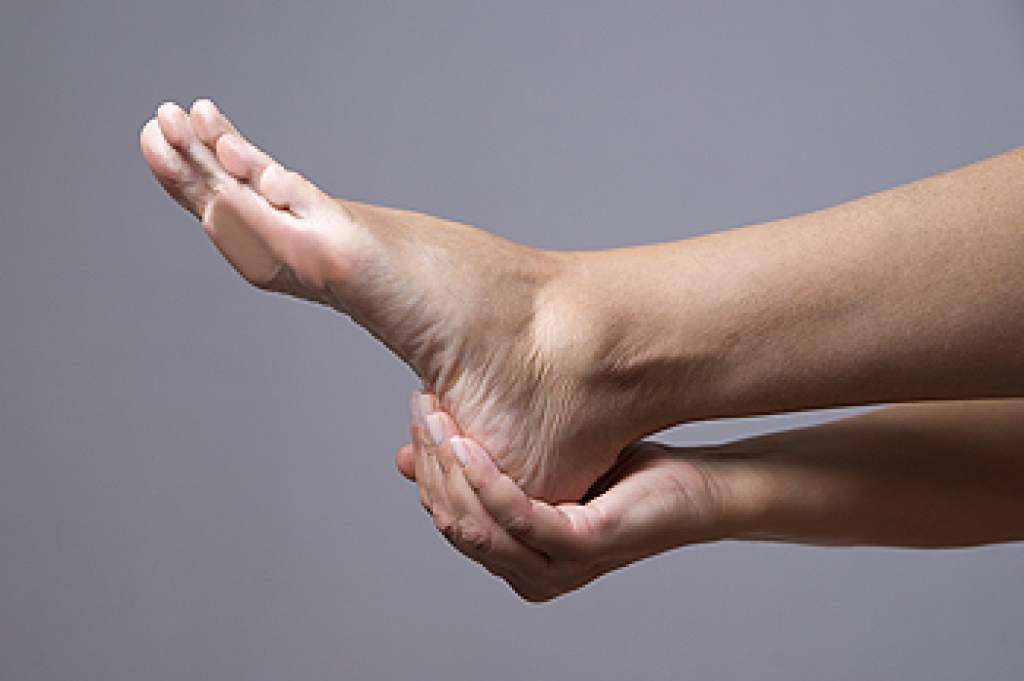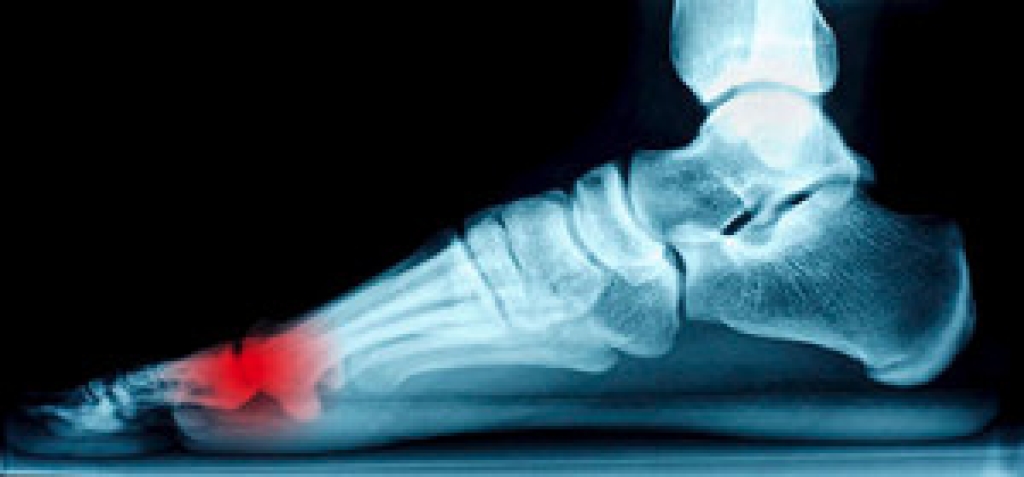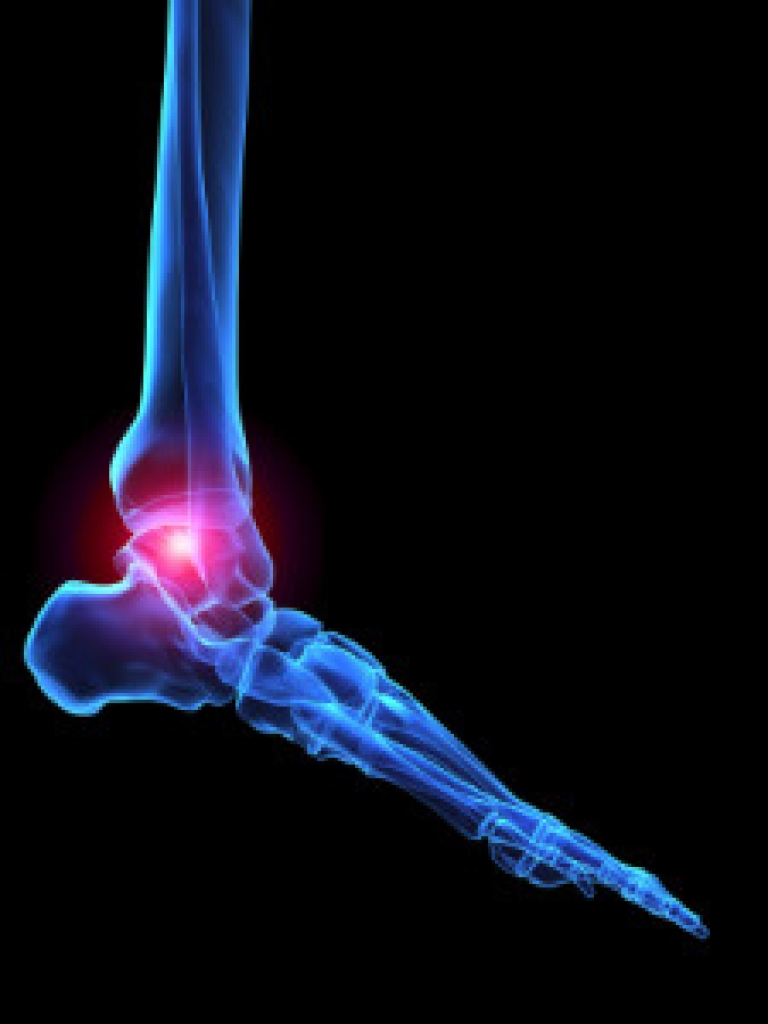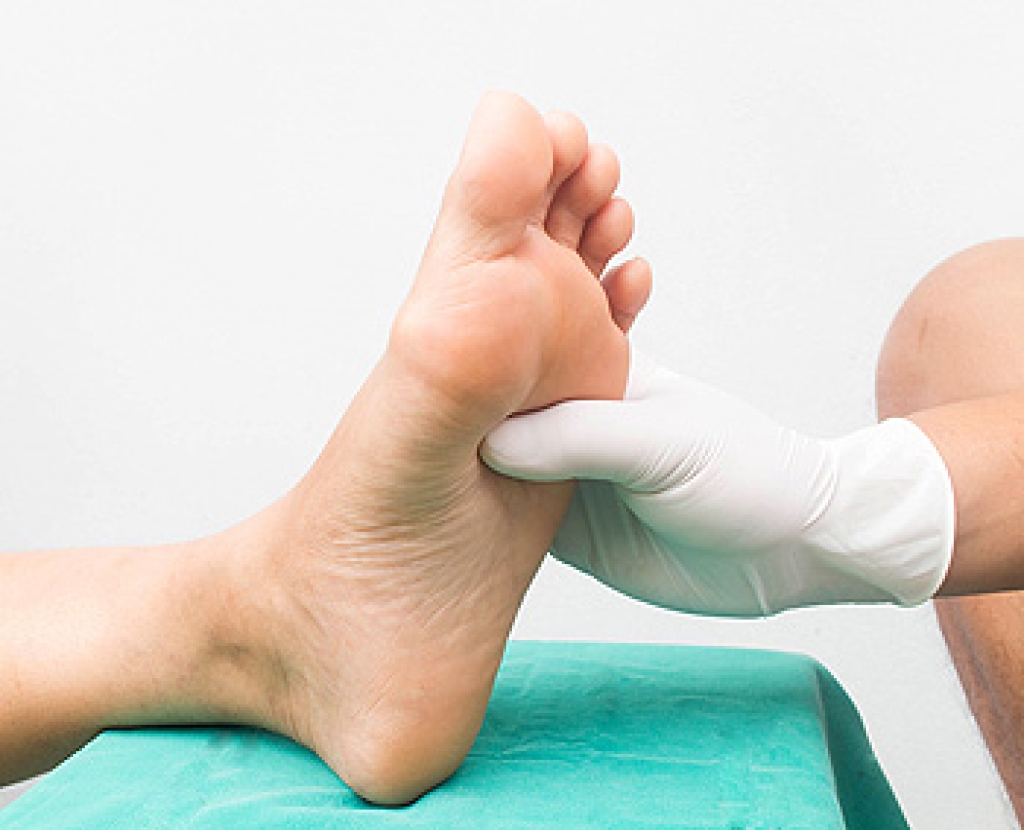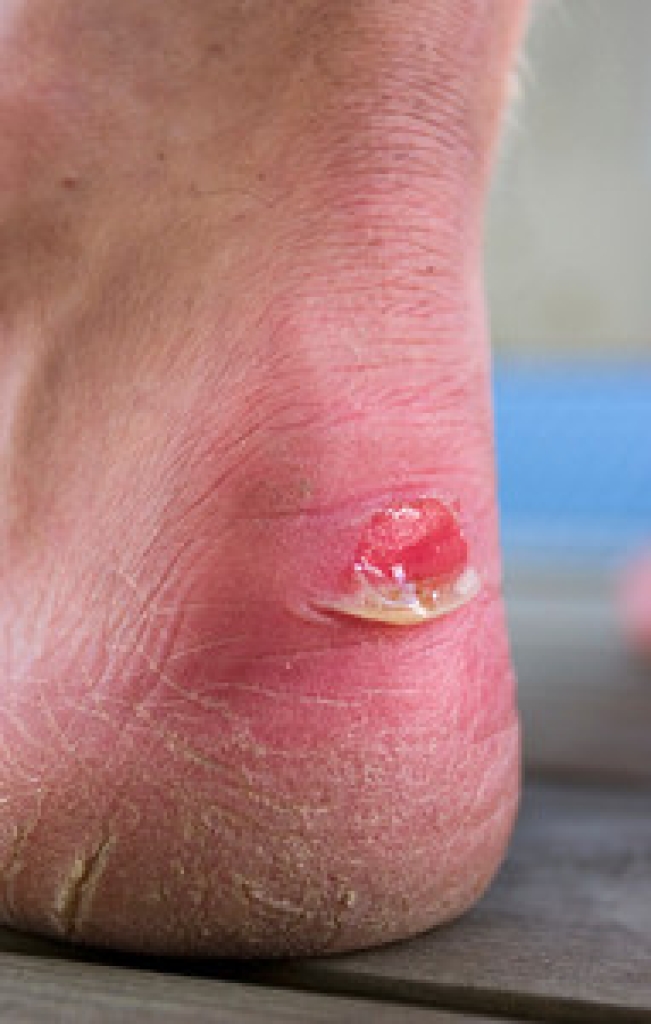 If you notice a small area filled with clear liquid on your foot, you may be observing what is referred to as a blister. It generally begins with a sore that appears to be red, and a blister will develop as pressure on the area continues. Common reasons for this condition to occur may include friction, which is often caused by poorly fitting shoes, in addition to burns, insect bites, or frostbite. Blisters naturally form to protect the damaged skin and will typically last for a few days. Research has shown that it’s beneficial to allow blisters to heal on their own, and this may prevent any bacteria or fungus from entering the body through the affected site. If you notice the fluid in the blister has turned a reddish or yellow color, it generally indicates an infection has developed, and it’s advised that medical attention be sought immediately. Please consult with a podiatrist for additional information about blisters on the feet.
If you notice a small area filled with clear liquid on your foot, you may be observing what is referred to as a blister. It generally begins with a sore that appears to be red, and a blister will develop as pressure on the area continues. Common reasons for this condition to occur may include friction, which is often caused by poorly fitting shoes, in addition to burns, insect bites, or frostbite. Blisters naturally form to protect the damaged skin and will typically last for a few days. Research has shown that it’s beneficial to allow blisters to heal on their own, and this may prevent any bacteria or fungus from entering the body through the affected site. If you notice the fluid in the blister has turned a reddish or yellow color, it generally indicates an infection has developed, and it’s advised that medical attention be sought immediately. Please consult with a podiatrist for additional information about blisters on the feet.
Blisters may appear as a single bubble or in a cluster. They can cause a lot of pain and may be filled with pus, blood, or watery serum. If your feet are hurting, contact one of our podiatrists of Westside Podiatry Center, LLP. Our doctors can provide the care you need to keep you pain-free and on your feet.
Foot Blisters
Foot blisters are often the result of friction. This happens due to the constant rubbing from shoes, which can lead to pain.
What Are Foot Blisters?
A foot blister is a small fluid-filled pocket that forms on the upper-most layer of the skin. Blisters are filled with clear fluid and can lead to blood drainage or pus if the area becomes infected.
Symptoms
(Blister symptoms may vary depending on what is causing them)
- Bubble of skin filled with fluid
- Redness
- Moderate to severe pain
- Itching
Prevention & Treatment
In order to prevent blisters, you should be sure to wear comfortable shoes with socks that cushion your feet and absorb sweat. Breaking a blister open may increase your chances of developing an infection. However, if your blister breaks, you should wash the area with soap and water immediately and then apply a bandage to the affected area. If your blisters cause severe pain it is important that you call your podiatrist right away.
If you have any questions, please feel free to contact one of our offices located in Liverpool, Camillus, Skaneateles, Oswego, and Cicero, NY . We offer the newest diagnostic and treatment technologies for all your foot care needs.
